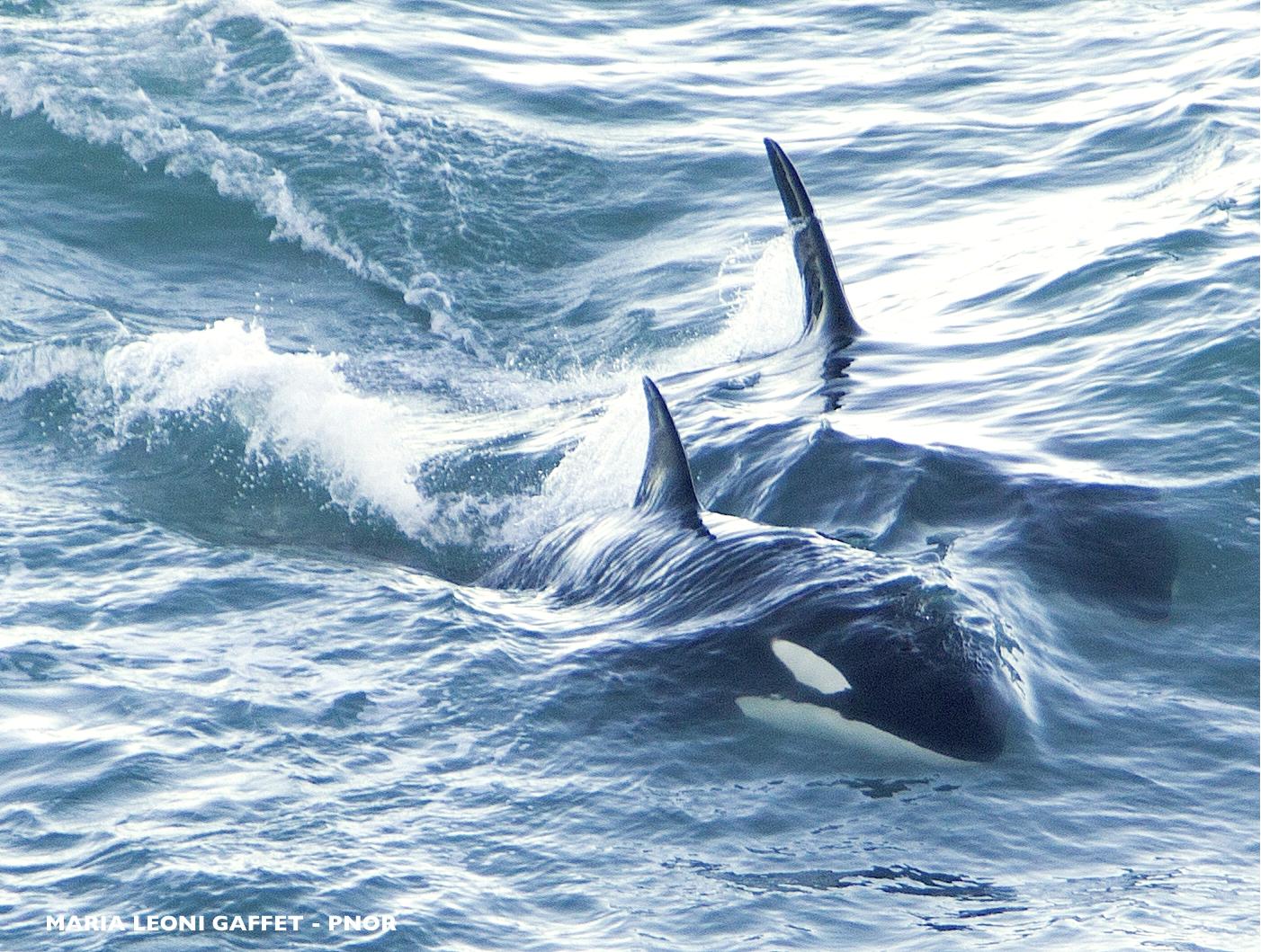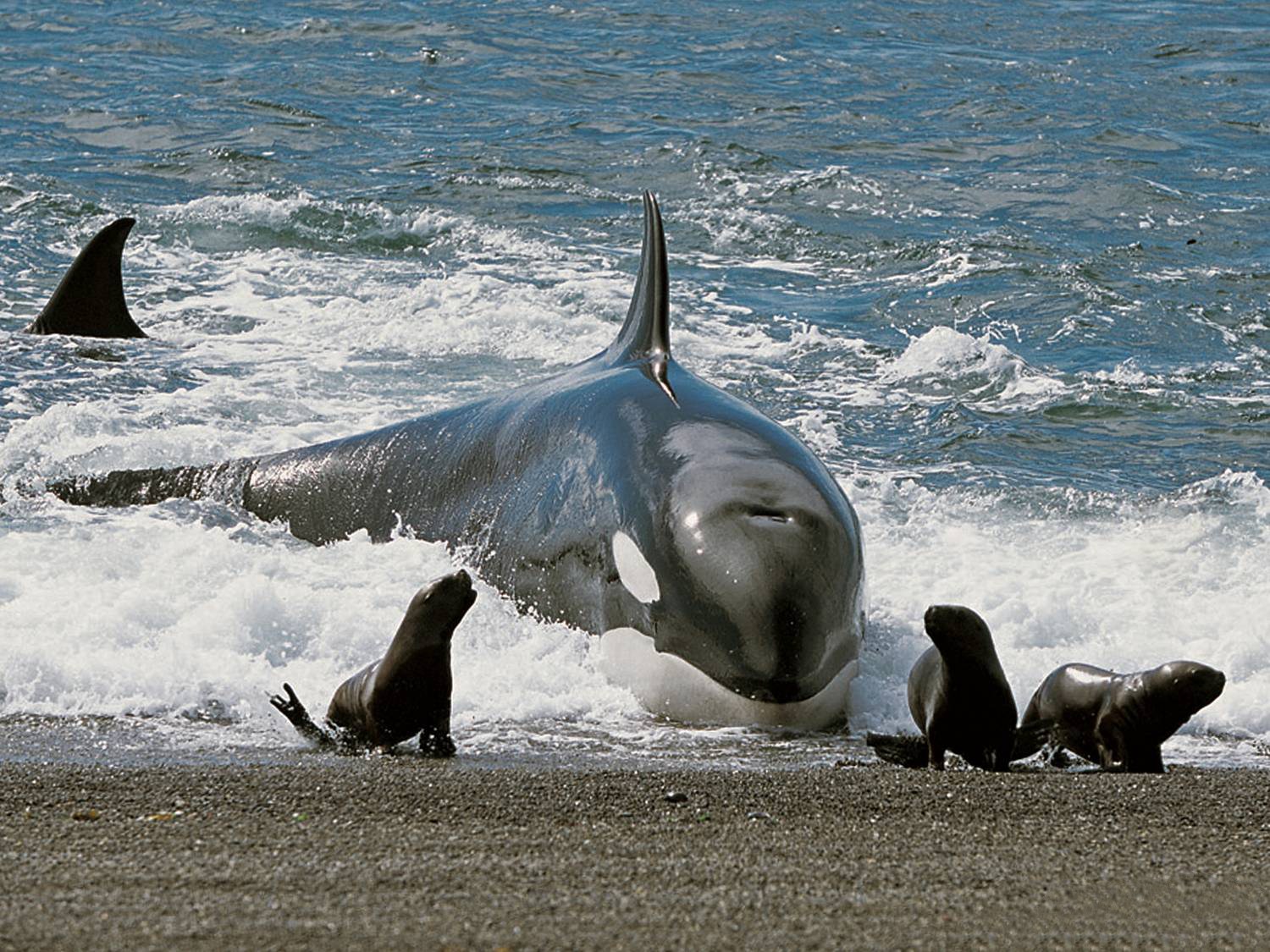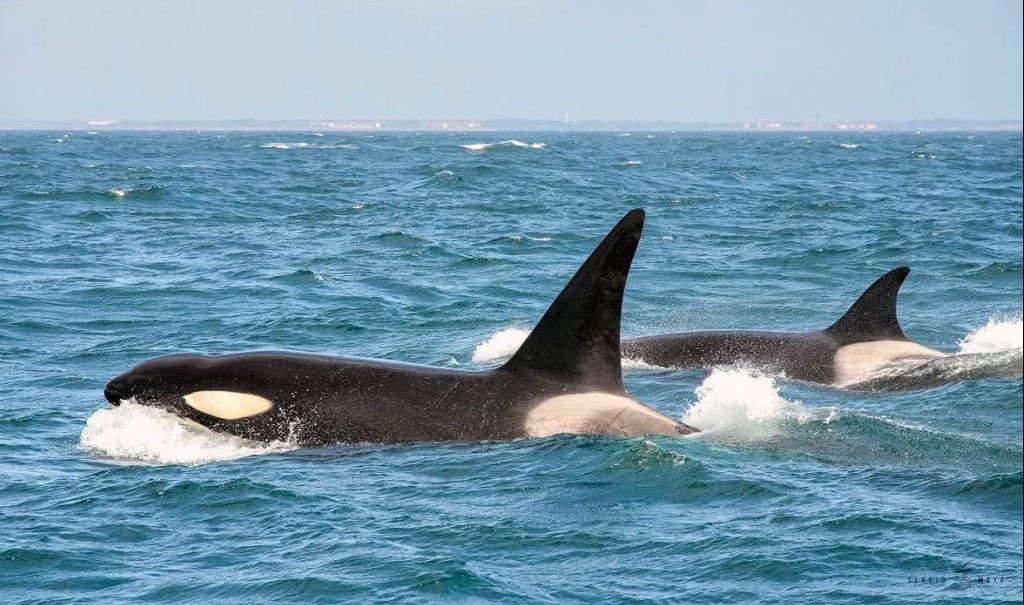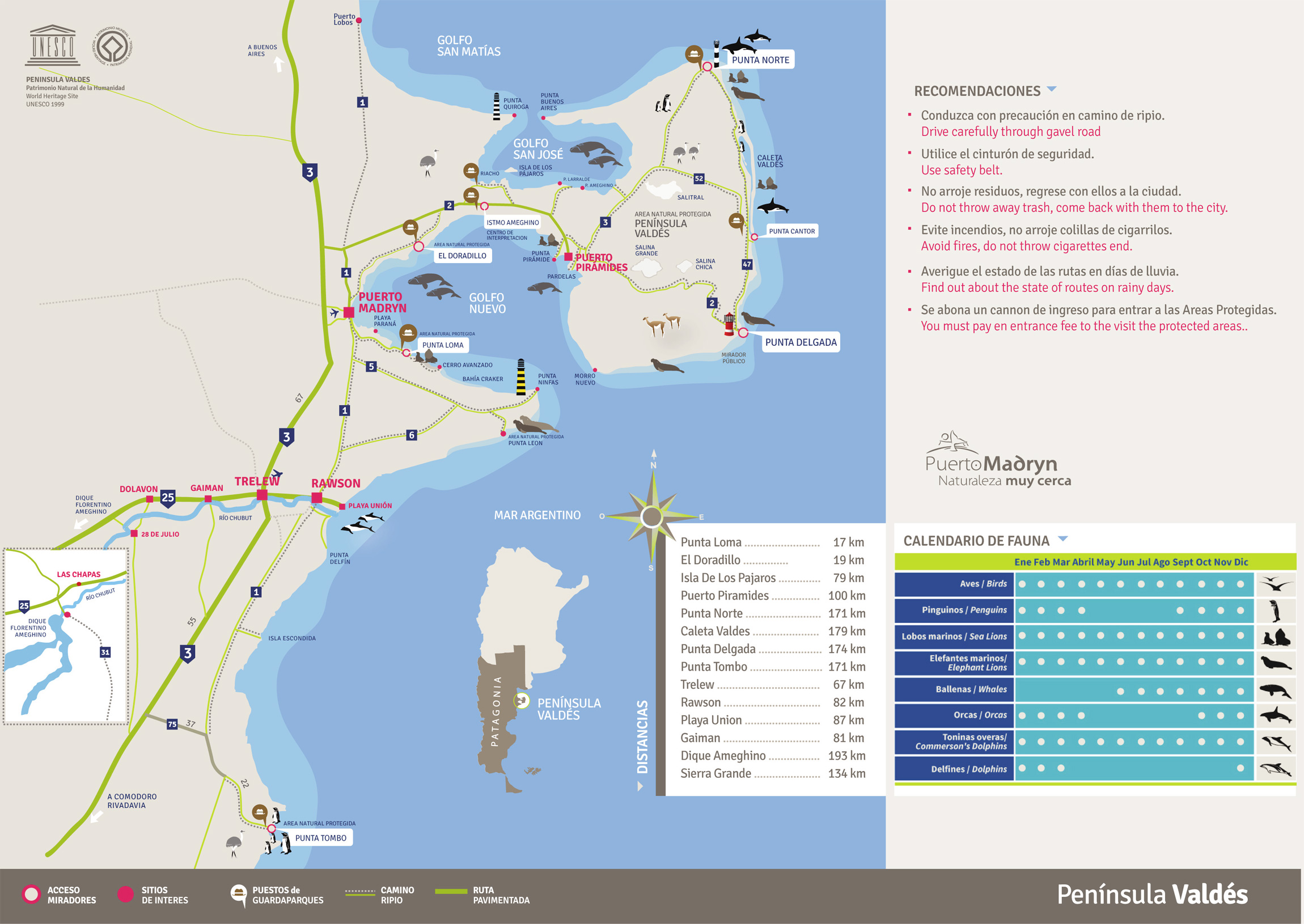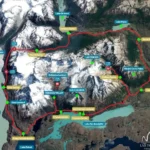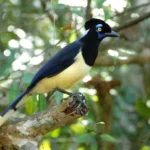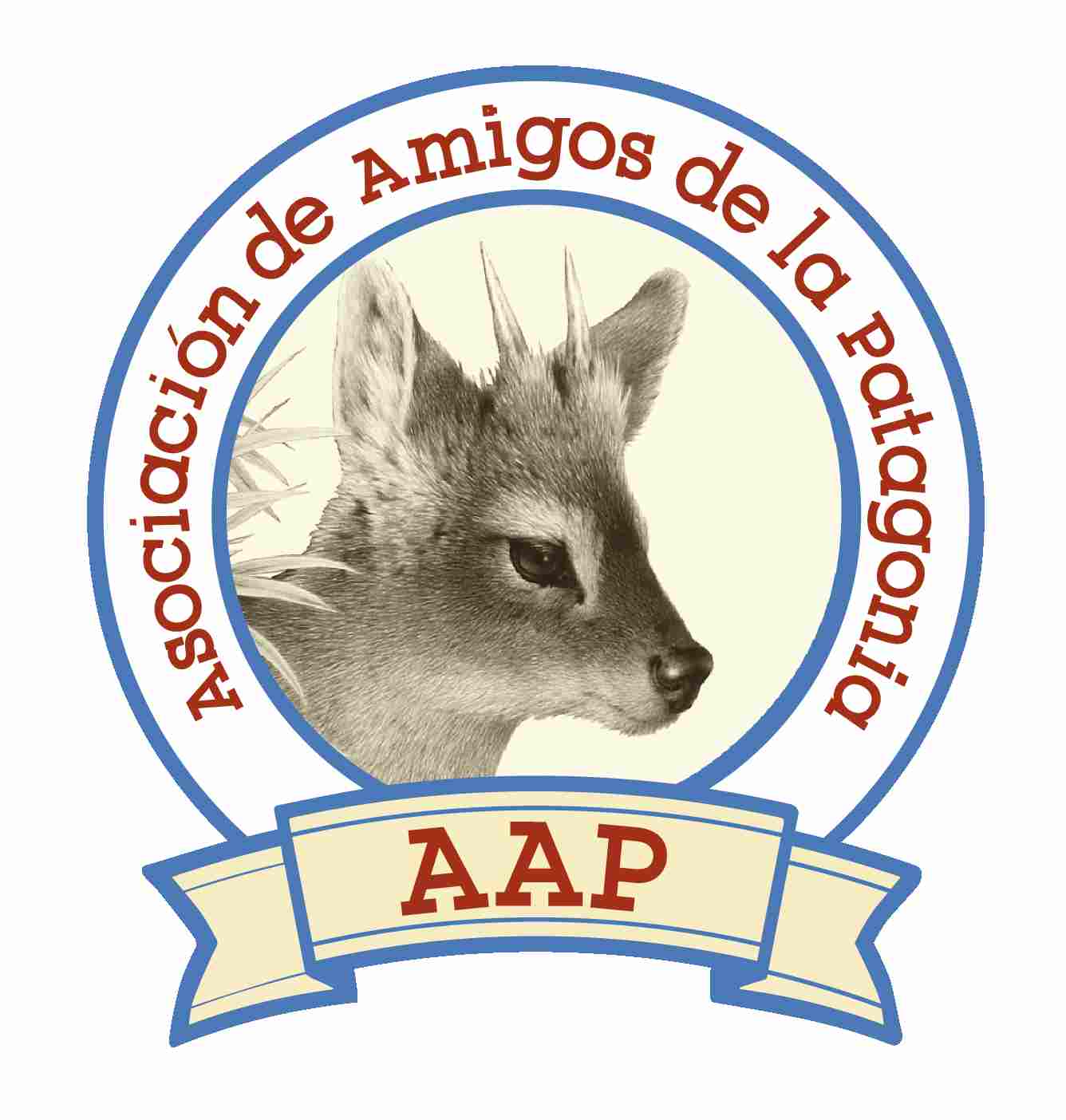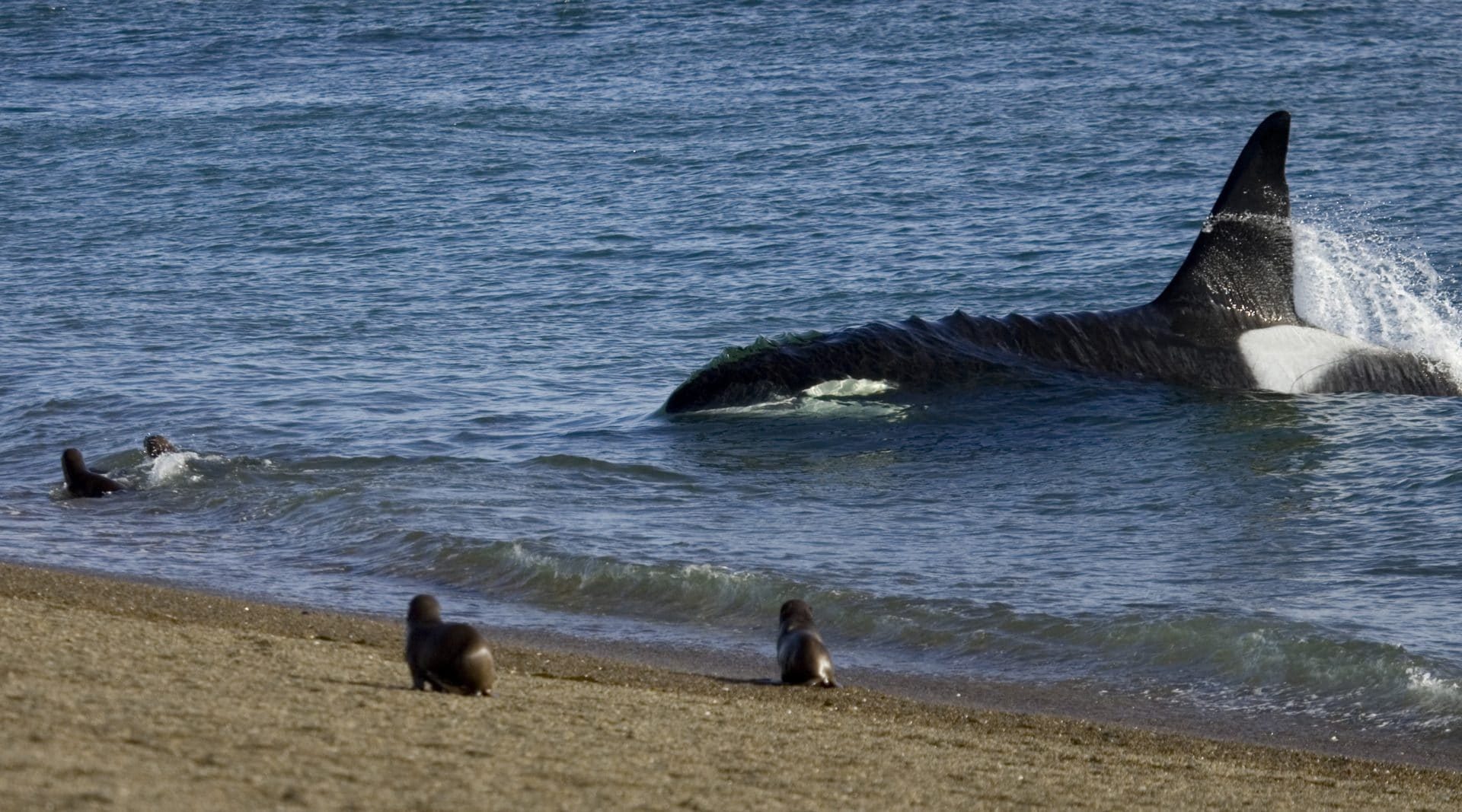
Orcas in Patagonia: Peninsula Valdes, a unique place.
As many of us do not know, the “killer whale” is a kind of dolphin. This amazing animal lives through all the seas in the world from the Arctic to Antarctica, searching for cool water. There are different sub-groups of Orcas around the world. All of them come from the same species, but they’ve separated no so long ago, into the different types. This is why it is a cosmopolitan specie. The most amazing fact about this specie is that all of the different families around the world had developed each own characteristics. In the Argentine Sea, there is a stable population of around 30 individuals, that do not migrate like the Right Whales. And they can be seen twice a year on Patagonian Shores.
Where is it the best place for orca whale watching in Argentina?
The Orcas can be seen around the world in specific moments of the year and on specific places. Here, in Argentina, the place to see the Orcas is the Valdes Peninsula in Punta Norte and Caleta Valdes.
Why is Peninsula Valdes so special for Orca whale watching?
As mentioned earlier, in the Argentinian sea there is a stable population, composed of a few different families. A curious fact about these Orcas is that they have a matriarchal organization. The female leader, among other duties, teaches to the younger orcas the unique feeding behavior they developed: the technique of intentional beaching. It is known that beaching is dangerous for cetaceans, many whales die every year because of this. This is the reason why this hunting technique is so interesting and is a unique phenomenon that only occurs in Argentina in Peninsula Valdes. No other group of Orcas or whales around the world had developed it.
What is intentional stranding?
The intentional stranding hunting technique is one of the ways Orcas have to hunt. The Orcas live in groups called PODS, and they patrol the shores during the times (and at the places) mentioned above. They do this to identify potential prays, which could be sea lion pups or other small animals. When they find the target, Orcas launch their bodies onto the beach trying to capture the prey. Afterward, they use their huge bodies to push themselves back to the sea. Adult orcas teach the small ones this technique, passing the experience from generation to generation.
Matriarchal groups, and exceptionally clever animals
Orcas belong to the dolphin’s family and there are different kinds of them. Their length is typically 6-8 meters on males (around 6 tons), and 5-7 meters on females (3-4 tons), and live between 10 and 45 years. They’re apex predators (no natural predators) and count with jaws with powerful teeth.
As explained before, Orcas form groups called PODS. These groups are related individuals which share a language and have a Matriarchal organization. Not all the Orcas use the intentional stranding technique, therefore, those who do, are called “stranders”.
Another way that Orcas have to hunt (on the sea) is by using echolocation. This means that they emit a sound that is reflected on the pray and returns to the Orca, allowing them to know the location where this potential pray might be.
Furthermore, there are records of Orcas hunting sea lions which were lying on top of icebergs, by creating waves that pushed sea lions into the water (easier to catch).
When is the time of the year for Orca whale watching?
Orca whale watching season is a bit unpredictable but, there are two important periods of the year where you’ll improve your chances. During the southern hemisphere’s spring, from October to December, Valdes Peninsula’s wildlife flourishes. It is the high season to see penguins, whales, birds, elephants and sea lions, the big price, which comes to these shores to reproduce. These recently born pups are a great feast for Orcas. During October and November, the colonies of Sea Elephants become special places to -eventually- watch an attack.
There is also a moment where penguins born San Lorenzo Estancia and Sea Lions from Caleta Valdes reach Punta Norte, where babies practice their swimming. During this migration from Caleta Valdes and in Punta Norte is where Orca whale watching is almost guaranteed.
The specific time of the year to see this natural show is 15 days between March and April, in Punta Norte, and 15 days between October and November, in Caleta Valdes. Also, the specific moment of the day for orca whale watching is when the tide rises. This is when Orcas might reach the penguin and sea lion colonies on the beach. During this period of days, tides rise twice a day. These conditions appear only a couple of days each month and are referred to as ¨double tide days¨.
Though its almost sure to see them performing their intentional beaching technique, it is highly recommended to be there some hours before and some hours after the tide rises. We recommend using the following link http://peninsulavaldes.org.ar/informe-diario/ . It is a daily updated web site of Peninsula Valdes reservation area, where they inform at which exact our is the tide expected and on which part of the peninsula.
In Punta Norte, the access to the beach is prohibited, but there is a trail a bit higher up where it is possible to watch this amazing event. Going with a private tour or self-driving are the best options because you can check the tides and go whenever you want. In Punta Norte there is a coffee shop, a kiosk, public restrooms, and a parking area to wait until the show begins.
Why are Orcas called Killer Whales?
The Orcas (Orcinus orca) are cetaceans from the dolphins family, which are also related to the whales. The term “Killer Whale” was probably given by ancient sailors, when they saw Orcas hunting other whales. However, there are very few records (if at all) of Orcas killing humans, and most of the accidents happen in captivity.
Where to spend the night?
There are two places where to spend the night near Caleta Valdes and Punta Norte. The main city outside Peninsula Valdes is Puerto Madryn, and the town inside Peninsula Valdes is Puerto Piramides. The distance to Cta. Vales and Punta Norte are almost the same; 168 km from Pto. Madryn and 73 km from Pto. Piramides. Also, it is possible to stay in some exclusive Estancias in different areas of the peninsula.
Combine orca whale watching with the rest of Argentina and Chile
Orca whale watching is only one of Argentina’s beautiful experiences. A trip to Peninsula Valdes can be combined with other Patagonic amazing places like the city at the end of the world, Ushuaia, the Perito Moreno Glacier and Argentina’s trekking capital, in Calafate and Chalten, or the Lake District near Bariloche.
If you are interested in wildlife tours there are many specific places in Argentina and Chile where you can see Pumas, Penguins, endemic Alligators, lots of birds species and more. Also, you can enjoy Argentina’s Highlights, a circuit which includes, besides Patagonia, tasting the best Malbecs in beautiful Vineyards in Mendoza, visiting Northwest Argentina and its amazing color mountains, the magnificent Iguazú Falls and Buenos Aires City.
By Morena Domsch – Beyond BA LATAM team
We invite you to discover the best places in Patagonia Argentina. Click below to see some tour examples:
-
- Wildlife Tours in Argentina.
- Orca Whale Watching Tour, including Puma Tracking, penguins, and humpback whales!
- Luxury Travel in Argentina.
- Road trip Holidays in Argentina.
- Patagonia hiking tours.
- Cruises in Patagonia.
- Patagonia Tours.
- Cruises to Antarctica.
- Argentina Tours
- Wildlife tours in Patagonia
- Patagonia Wildlife Safari
Beyond BA LATAM offers tours and experiences for all these alternatives, where we stand out in tailor-made vacations, designed around your interests and travel style. Contact us, and let’s plan your next beautiful journey together!





